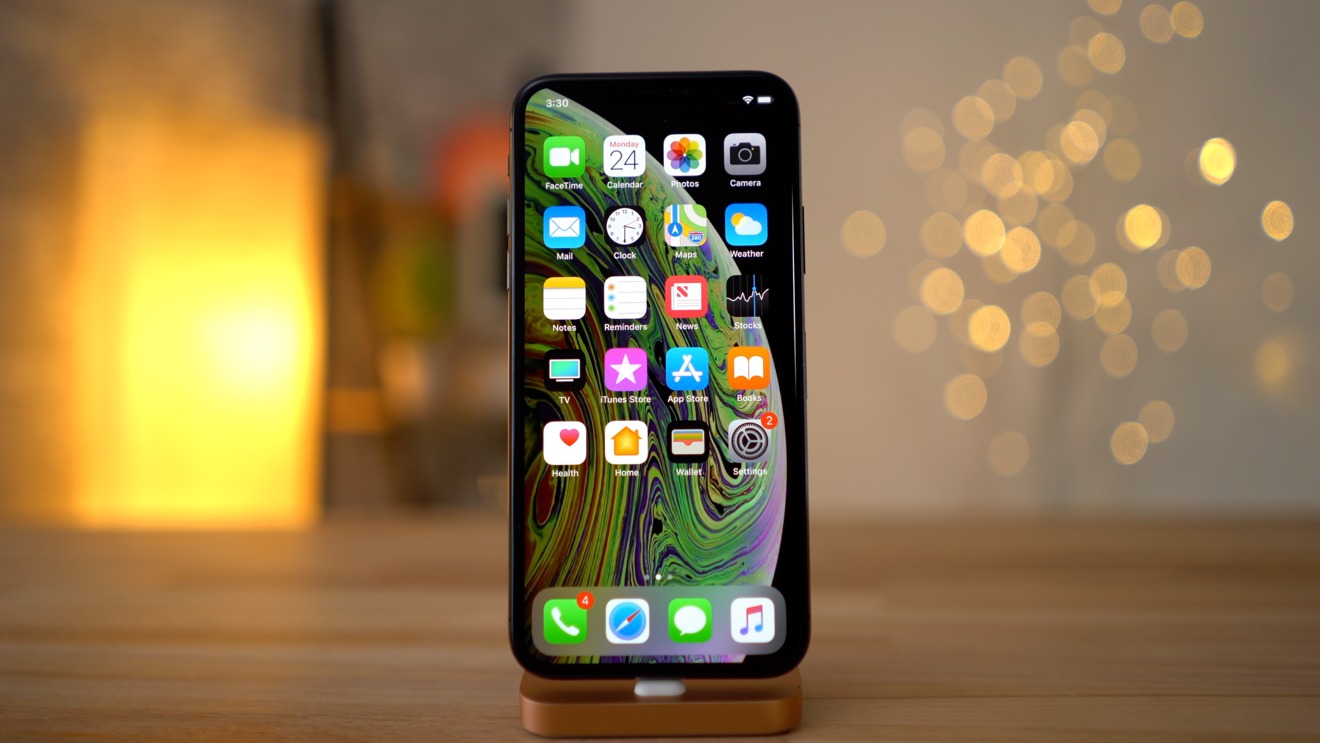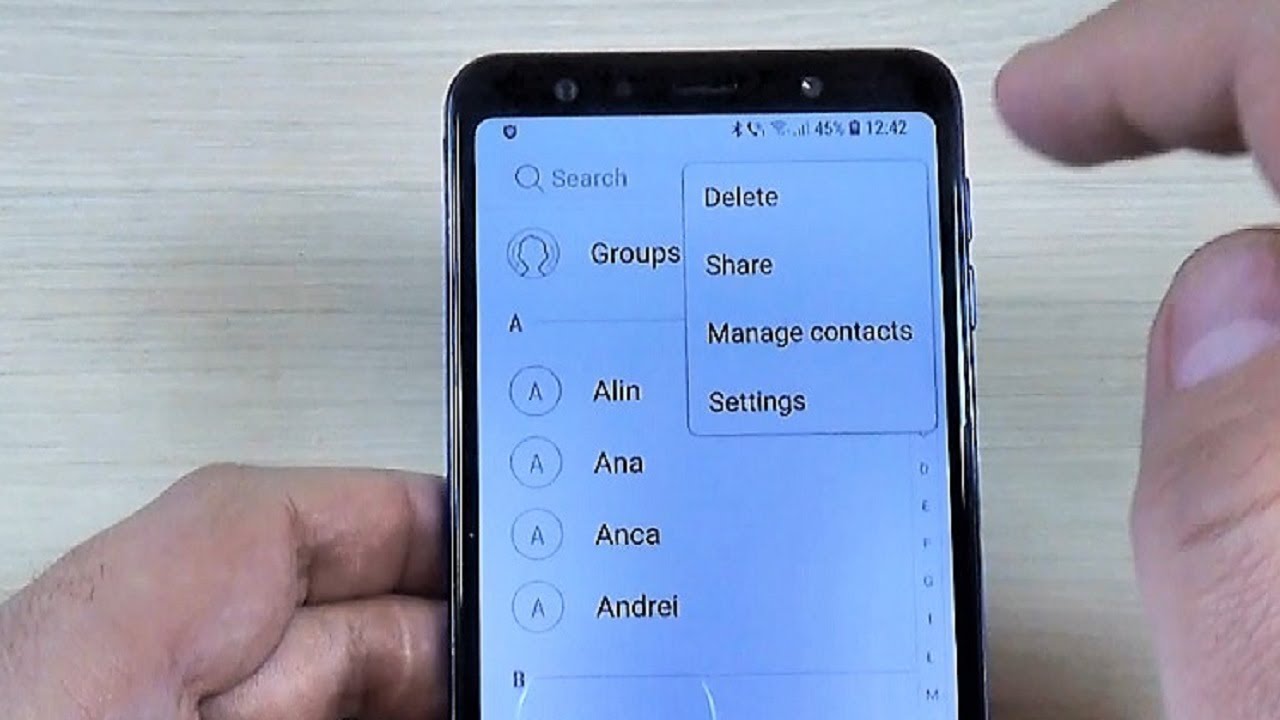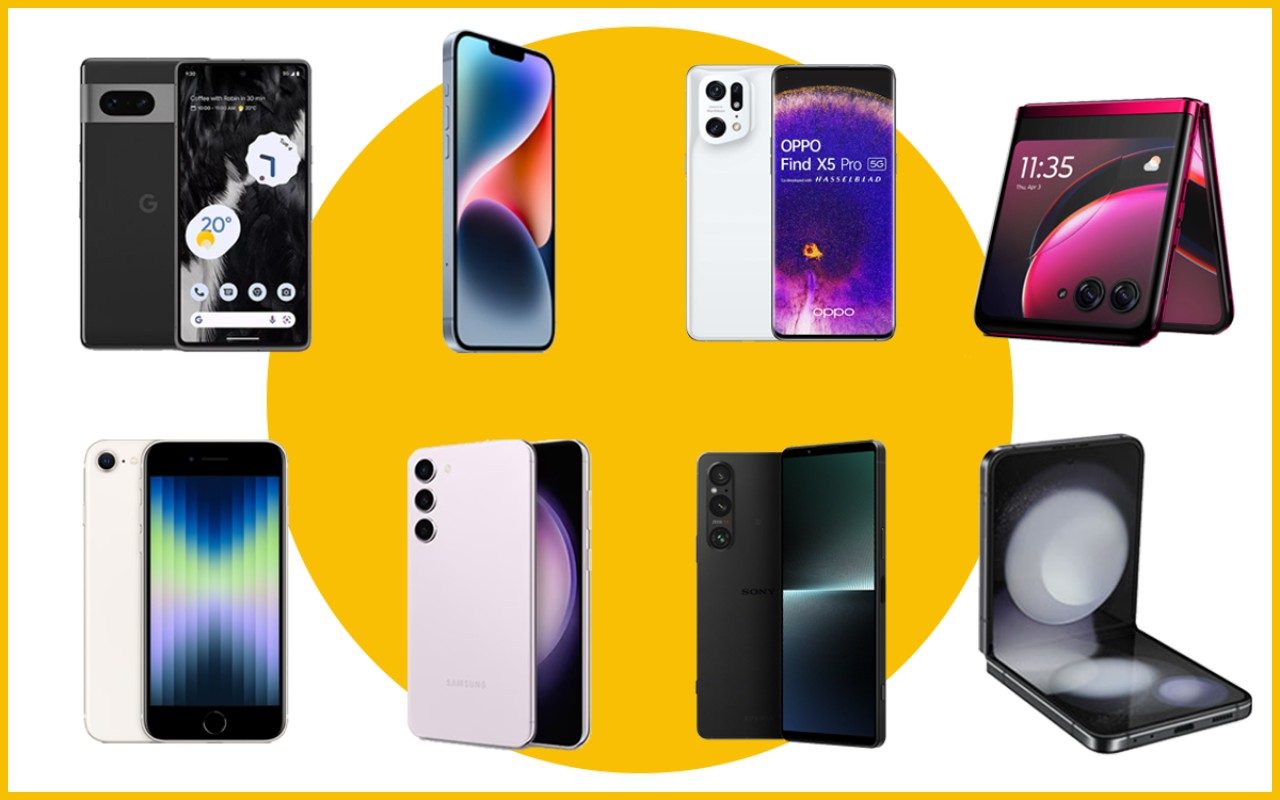Introduction
In today's digital age, our smartphones have become an integral part of our lives, serving as repositories for cherished memories captured through photos. Among the myriad of components that make up a smartphone, the SIM card is a crucial element that often sparks curiosity. Many iPhone users wonder about the role of the SIM card in photo storage and whether it can serve as a storage solution for their ever-growing collection of images.
Understanding the intricacies of iPhone photo storage and the role of the SIM card can provide valuable insights into managing and safeguarding these precious digital assets. This article delves into the functionality of the SIM card in an iPhone, the mechanisms through which photos are stored, and the implications for utilizing the SIM card as a storage medium. By gaining a comprehensive understanding of these aspects, iPhone users can make informed decisions about managing their photo storage effectively.
As we embark on this exploration of iPhone photo storage and the role of the SIM card, it's essential to recognize the interplay between hardware, software, and user behavior in shaping the photo storage landscape. Through this journey, we aim to shed light on the nuances of photo storage on an iPhone, empowering users to optimize their photo management strategies and make the most of their device's capabilities.
What is a SIM card in an iPhone?
A SIM (Subscriber Identity Module) card is a small, removable card that is inserted into an iPhone to enable cellular connectivity. It serves as the link between the device and the mobile network, allowing users to make calls, send messages, and access mobile data services. The SIM card contains unique identification information, including the user's phone number, network authorization data, and other relevant details essential for communication with the cellular network.
In addition to facilitating communication, the SIM card plays a pivotal role in authenticating the user's identity on the network. When an iPhone is powered on, the SIM card undergoes a process of authentication, validating the user's credentials and enabling access to the mobile network. This authentication process is crucial for ensuring secure and authorized usage of the cellular services associated with the SIM card.
From a physical standpoint, the SIM card is typically located in a designated slot on the side of the iPhone. Depending on the iPhone model, the SIM card slot may be accessed by using a SIM card ejector tool or a small pin to release the tray and insert or replace the SIM card. The compact size of the SIM card reflects its role as a fundamental component that enables seamless connectivity and communication on the iPhone.
It's important to note that while the SIM card facilitates cellular connectivity and user authentication, it is not directly involved in the storage of photos or other multimedia content on the iPhone. Instead, the SIM card primarily handles communication-related functions, such as voice calls, text messages, and mobile data connectivity, while the device's internal storage and external options like iCloud or other cloud services are utilized for storing photos and other multimedia files.
By understanding the essential role of the SIM card in enabling cellular connectivity and user authentication, iPhone users can appreciate its significance in maintaining seamless communication and network access. As we delve deeper into the intricacies of iPhone photo storage, it becomes evident that the SIM card's function extends beyond photo storage, emphasizing its core role in facilitating mobile communication and connectivity.
How does iPhone store photos?
The process of storing photos on an iPhone involves a sophisticated interplay of hardware, software, and user interaction. When a user captures a photo using the iPhone's camera or saves an image from other sources, the device employs a systematic approach to manage and store these visual assets.
Upon capturing a photo, the iPhone utilizes its internal storage, typically in the form of flash memory, to store the image file. This internal storage, often referred to as the device's "hard drive," houses the operating system, apps, and user data, including photos and videos. The iPhone's internal storage capacity varies across different models, with options ranging from 32GB to 512GB or more, offering ample space for photo storage.
The photos are stored in a digital format, such as JPEG or HEIC, depending on the user's settings and the iPhone model. These image files are organized within the device's file system, allowing users to access and manage their photos through the Photos app and other compatible applications.
In addition to internal storage, iPhone users can leverage cloud-based services, such as iCloud, to store and synchronize their photos across multiple devices. iCloud Photo Library, a feature of iCloud, enables seamless synchronization of photos and videos across iPhones, iPads, Macs, and even Windows computers, providing a convenient and secure backup solution for photo storage.
Furthermore, the iPhone's advanced camera capabilities, including high-resolution sensors and computational photography features, contribute to the creation of visually stunning images. The device's software, equipped with image processing algorithms and editing tools, enhances the photos and optimizes their storage, ensuring that users can preserve and share their memories with exceptional clarity and detail.
As users capture and accumulate a plethora of photos, the iPhone's organizational features, such as albums, smart albums, and search functionality, enable efficient management and retrieval of specific images. This intuitive approach to photo organization empowers users to curate their photo collections and relive cherished moments with ease.
In essence, the iPhone's photo storage mechanism encompasses a blend of cutting-edge hardware, robust software, and user-friendly features, culminating in a seamless and immersive experience for preserving and accessing visual memories. By embracing the intricacies of iPhone photo storage, users can harness the full potential of their device to capture, store, and cherish moments that matter most.
Can photos be stored on the SIM card?
The SIM (Subscriber Identity Module) card in an iPhone serves as a vital component for cellular connectivity and user authentication, playing a pivotal role in enabling communication with the mobile network. However, when it comes to the storage of photos, the SIM card is not designed for this purpose.
Unlike the internal storage of the iPhone, which is equipped to handle the storage and management of photos, the SIM card has inherent limitations that make it unsuitable for storing visual content. The primary function of the SIM card revolves around facilitating communication services, such as voice calls, text messages, and mobile data connectivity, while its storage capacity is minimal compared to the iPhone's internal storage or cloud-based solutions.
The SIM card typically has a limited storage capacity, often focused on storing essential information related to network authentication and user identification. This limited capacity is insufficient for accommodating the large file sizes associated with high-resolution photos and videos captured by modern iPhone cameras. As a result, attempting to store photos directly on the SIM card would quickly exhaust its storage space, impeding its core functionality related to network communication and authentication.
Furthermore, the SIM card operates within a distinct framework designed for network-related functions, and its storage structure is not optimized for the complex file management and retrieval requirements associated with photos. Unlike the iPhone's internal storage, which is integrated with the device's operating system and photo management features, the SIM card lacks the necessary infrastructure for efficiently handling and organizing visual content.
In essence, the SIM card's role in an iPhone is centered on facilitating seamless communication and network access, while the device's internal storage and cloud-based services are purpose-built for handling the storage and synchronization of photos. By leveraging the iPhone's robust internal storage and cloud solutions like iCloud, users can ensure the secure and efficient storage of their visual memories, while recognizing the distinct functionalities of the SIM card in enabling cellular connectivity and user authentication.
By understanding the limitations of SIM card storage and embracing the dedicated photo storage capabilities of the iPhone, users can optimize their approach to preserving and accessing their cherished photos, ensuring a seamless and enriching experience that aligns with the device's capabilities and user-centric design.
Understanding the limitations of SIM card storage
The SIM (Subscriber Identity Module) card embedded within an iPhone serves as a crucial element for enabling cellular connectivity and authenticating the user's identity on the mobile network. However, when it comes to the storage of photos, the SIM card is inherently limited in its capacity and functionality. Understanding these limitations is essential for iPhone users seeking to optimize their approach to photo storage and management.
One of the primary limitations of SIM card storage is its minimal capacity. Typically, SIM cards are designed to store essential information related to network authentication, user identification, and subscriber details. This limited storage capacity is optimized for handling the specific data required for network communication, such as the user's phone number, network authorization codes, and other pertinent details. However, the storage space available on a SIM card is significantly smaller compared to the internal storage of an iPhone, which is tailored to accommodate a wide range of user data, including photos, videos, apps, and system files.
Moreover, the storage structure and file management capabilities of a SIM card are not conducive to handling visual content such as photos and videos. The SIM card operates within a distinct framework optimized for network-related functions, and its storage architecture is not designed to efficiently manage the large file sizes associated with high-resolution images captured by modern iPhone cameras. Attempting to store photos directly on the SIM card would quickly deplete its limited storage space, impeding its core functionality related to network communication and user authentication.
Additionally, the SIM card lacks the sophisticated organizational features and file management capabilities found in the iPhone's internal storage and cloud-based solutions. The device's internal storage, coupled with cloud services like iCloud, offers robust photo management features, including albums, search functionality, and synchronization across multiple devices. In contrast, the SIM card's storage structure is primarily focused on facilitating network connectivity and user authentication, lacking the infrastructure required for efficient photo storage and retrieval.
By recognizing the inherent limitations of SIM card storage and leveraging the dedicated photo storage capabilities of the iPhone's internal storage and cloud-based solutions, users can ensure the secure and efficient preservation of their visual memories. Embracing the distinct functionalities of the SIM card and the iPhone's storage ecosystem empowers users to optimize their approach to photo storage, aligning with the device's capabilities and user-centric design.
Managing photo storage on an iPhone
Managing photo storage on an iPhone entails a multifaceted approach that encompasses leveraging the device's internal storage, optimizing settings, and utilizing cloud-based solutions to ensure the seamless organization and preservation of visual memories. With the ever-increasing prevalence of high-resolution photos and videos captured on iPhones, effective photo management strategies play a pivotal role in enhancing the user experience and safeguarding cherished moments.
One of the fundamental aspects of managing photo storage on an iPhone involves optimizing the device's internal storage capacity. Users can employ various techniques to streamline their photo collection, such as creating albums, organizing images into thematic categories, and deleting redundant or low-quality photos. This proactive approach not only conserves storage space but also facilitates effortless navigation and retrieval of specific photos, enabling users to curate their visual narratives with precision and clarity.
Furthermore, the iPhone offers a range of settings and features that empower users to tailor their photo storage preferences according to their needs. For instance, the "Optimize iPhone Storage" option within the Photos settings intelligently manages the device's storage by storing high-resolution photos and videos in iCloud while retaining lightweight versions on the iPhone. This dynamic optimization ensures that users can access their entire photo library while conserving valuable storage space on the device.
Cloud-based solutions, notably iCloud Photo Library, serve as a cornerstone of efficient photo storage management on an iPhone. By seamlessly synchronizing photos and videos across multiple devices, iCloud Photo Library provides a secure and accessible backup for visual content, mitigating the risk of data loss and offering a cohesive photo management experience across the Apple ecosystem. Additionally, iCloud storage plans offer scalable options for users to expand their photo storage capacity, accommodating the growing volume of visual content captured and preserved on their iPhones.
The integration of advanced search functionality and artificial intelligence-driven features within the Photos app further enhances the management of photo storage on an iPhone. Users can effortlessly locate specific photos by leveraging intelligent search queries based on people, objects, scenes, and even textual content within images, fostering a frictionless experience in navigating and organizing their extensive photo libraries.
In essence, managing photo storage on an iPhone involves a harmonious blend of leveraging internal storage, optimizing settings, and harnessing cloud-based solutions to curate, preserve, and access visual memories with ease. By embracing these comprehensive photo management strategies, iPhone users can elevate their photo storage experience, ensuring that every moment captured is safeguarded and readily accessible within the dynamic ecosystem of their device.
Conclusion
In conclusion, the intricate interplay between the SIM card, internal storage, and cloud-based solutions underscores the multifaceted landscape of photo storage on an iPhone. As we navigate the realm of preserving visual memories, it becomes evident that the SIM card, with its core role in enabling cellular connectivity and user authentication, stands distinct from the dedicated mechanisms tailored for photo storage and management.
The inherent limitations of SIM card storage, including minimal capacity and a framework optimized for network-related functions, underscore the imperative for users to leverage the robust internal storage and cloud-based solutions offered by the iPhone ecosystem. By embracing the dedicated photo storage capabilities of the device's internal storage and iCloud, users can ensure the secure and efficient preservation of their visual memories, aligning with the device's capabilities and user-centric design.
Furthermore, effective photo management strategies, encompassing the optimization of internal storage, leveraging settings, and harnessing cloud-based solutions, empower users to curate, preserve, and access their visual narratives with precision and ease. The seamless integration of advanced search functionality and artificial intelligence-driven features within the Photos app further enhances the user experience, fostering a frictionless approach to navigating and organizing extensive photo libraries.
Ultimately, the iPhone's photo storage ecosystem reflects a harmonious fusion of cutting-edge hardware, robust software, and user-centric design, culminating in a seamless and immersive experience for preserving and accessing visual memories. By embracing the distinct functionalities of the SIM card and the dedicated photo storage capabilities of the iPhone, users can optimize their approach to photo storage, ensuring that every cherished moment captured is safeguarded and readily accessible within the dynamic ecosystem of their device.

























